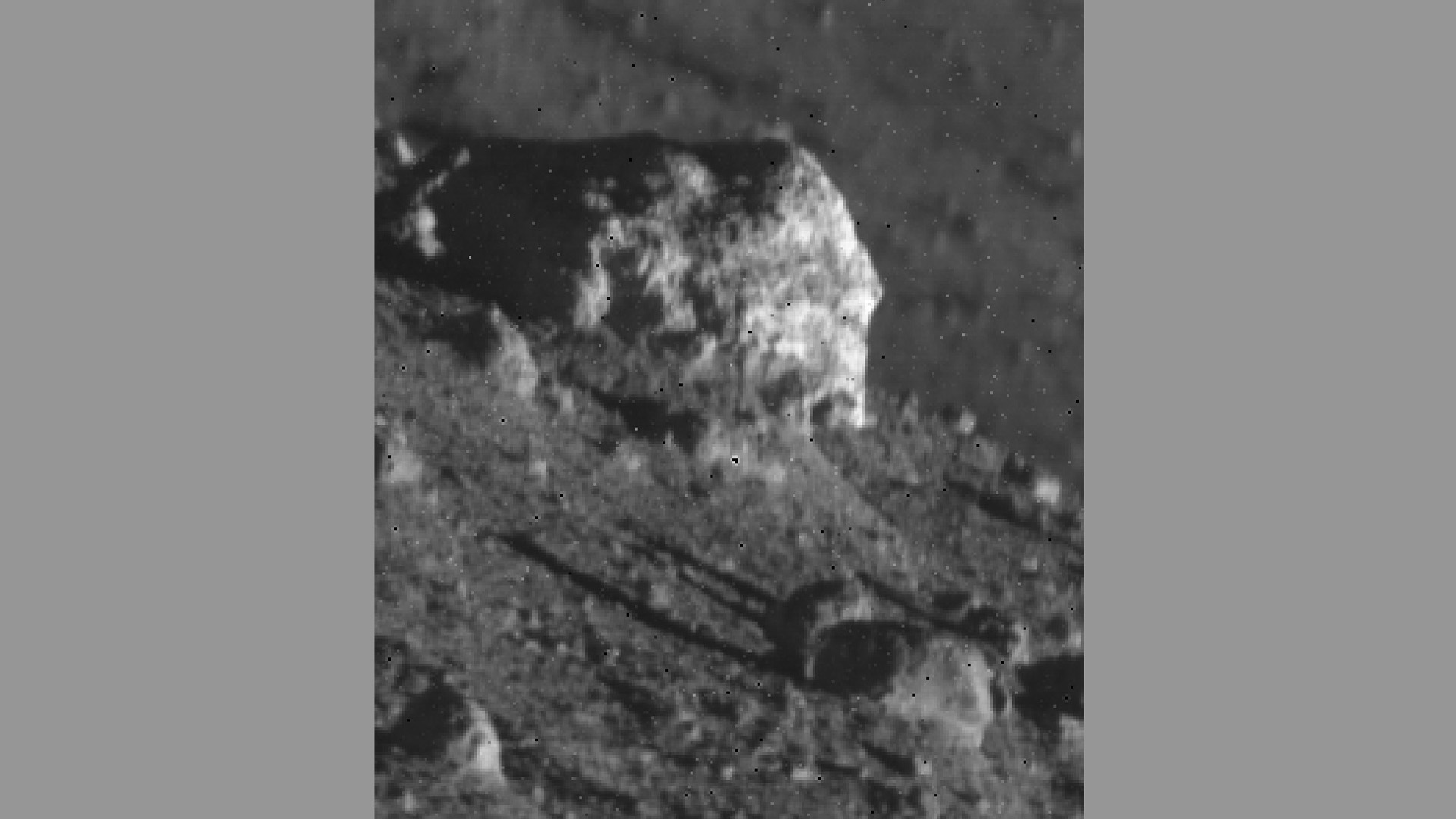Japan’s SLIM moon lander may be dead for good as freezing lunar night sets in

Japan’s historic SLIM moon lander has powered down ahead of a likely mission-ending cold lunar nighttime — but not before grabbing some final images and loads of science data.
SLIM, short for “Smart Lander for Investigating Moon,” nailed its precision touchdown on the rim of Shioli crater on Jan. 19, despite engine troubles that saw it land nose-down. As a result, the spacecraft’s solar cells face westward and are unable to receive the expected levels of sunlight, initially cutting operations on the lunar surface very short. But SLIM triumphantly reawakened nearly 10 days after landing, as the sun finally shone on its panels.
The Japan Aerospace Exploration Agency (JAXA), which operates SLIM, has spent recent days scanning the nearby lunar surface with the spacecraft’s Multi-Band Camera (MBC) to learn about its composition.
MBC is designed to scope out olivine and other minerals through analyzing the light signatures, or spectra, of reflected sunlight, according to the nonprofit Planetary Society.
JAXA’s SLIM account on X, formerly Twitter, posted a final image taken by SLIM’s navigation camera on Jan. 31 Japan time, while stating that the agency confirmed the spacecraft had entered a dormant state as expected.
After completing operation from 1/30 ~ 1/31, #SLIM entered a two week dormancy period during the long lunar night 🌚. Although SLIM was not designed for the harsh lunar nights, we plan to try to operate again from mid-February, when the Sun will shine again on SLIM’s solar cells. pic.twitter.com/JO4ZgDaOxoFebruary 1, 2024
JAXA will need to wait out the roughly 14.5-Earth-day-long lunar nighttime and then wait for favorable lighting and temperature conditions later in the next lunar daytime (which starts around Feb. 15) before SLIM can potentially be revived once more. For the probe to awake again, however, its electronics must hold up in the face of equatorial lunar nighttime temperatures of around minus 208 degrees Fahrenheit (minus 130 degrees Celsius).

But whether or not SLIM wakes up, the spacecraft has hit its full and extended mission goals by achieving a precision landing, deploying a pair of small rovers and demonstrating their interoperability, and obtaining a wealth of science data.
SLIM’s X account also posted labeled images of targets of MBC’s spectroscopic imaging, showing the various rocks and regolith that are being studied.
“Based on the large amount of data we have obtained, we are proceeding with analyses to identify rocks and estimate the chemical composition of minerals, which will help solve the mystery of the origin of the moon,” a Google machine translation of a Feb. 1 JAXA statement read.
“We will announce scientific results as soon as they are obtained,” the statement added.
Originally posted on Space.com.





